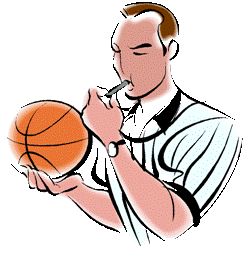ASK THE OFFICIAL

What Is A Foul?
Written by: Ken Foster
November 19, 2008
A foul is an infraction of the rules which is charged and penalized. In most cases, a foul is called when one player obtains an unfair advantage over another. There are several types of fouls - a personal foul is defined as illegal contact with an opponent while the ball is live and hinders an opponent from normal offensive or defensive movements; a common foul is a personal foul which is neither intentional or flagrant; an intentional foul is a personal or technical foul which neutralizes an opponent's obvious advantageous position; a flagrant foul may be a personal or technical foul of a violent or savage nature which displays unacceptable conduct; and, a technical foul is considered a foul by a non player, a non-contact foul by a player or an intentional or flagrant foul while the ball is dead. Technical fouls may also be assessed for other various rules infractions including permitting a player to play after being disqualified, delay of game, a team member dunking a basketball during warm-up or intermission and illegal uniforms or uniform numbers.
The important thing to keep in mind is that while the old saying is that basketball is not a contact sport, actually that cannot be further from the truth. All one has to do is know someone who works for the Celtics and have them give you floor seats right under the basket. The amount of contact rivals a hockey game and at times, even a football game. If officials called all contact, games would last for hours, if not days. The most important part of calling a foul is discretion. An official, in a split second, has to determine if there was contact, and if there was, did it put one player at an unfair disadvantage. Many times as players drive to the basket, there may be incidental or slight contact, but if in the opinion of the official, it did not affect the player’s ability to shoot, there will be no-call. Conversely, sometimes the slightest bump on top of the key is enough to keep an offensive player from being able to drive to the basket, and that would be called.
In a typical game, without trying, fouls typically offset in number, i.e. team A may have 12 called on them, team B 14. That is typical of most games - rarely do we see something like a 30-10 foul count. So in the heat of passion, when it seems like every call is going against your team, usually, by the end of the game, its pretty even, and the thing is, that is the nature of the game!
Do you have a rule that you would like clarified? If so, submit your question to Ken Foster at kenfos@comcast.net
